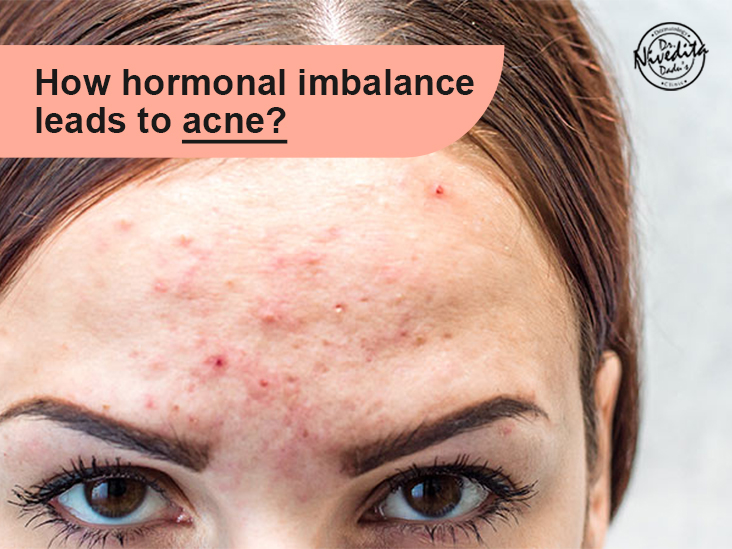Acne, a term we all are very familiar with and face this issue at least once in our life. We are unaware of the fact that acne can occur due to multiple reasons and at any point in life. Hormonal Acne or Adult Acne is very commonly faced by women than men. When we talk about hormonal acne it can be a result of multiple causes and hence multiple types of adult acne. Some of these are:
- Late-onset acne ( Women over 25years of age)
- Therapy- Resistant Acne
- Stress-induced acne
- Premenstrual onset
- Hyperandrogenism
Along with adult acne, hormonal imbalances can cause many more visible side effects on skin and body. Like facial hair growth, hyperinsulinemia leading to obesity, skin tags, and acanthosis nigricans. Hormonal acne has characteristic distribution in the lower third of the face, predominantly on the chin and jawline area. Hormonal Acne can be new in adulthood and is termed as new-onset, whereas it can be present in adolescence and continued in adulthood also being the persistent acne. In certain cases, it can be recurrent which vanished after adolescence but then reappeared in adulthood. As the term suggests hormonal acne are majorly related to hormonal changes during menstruation, pregnancy, and menopause. It can flare up during these times and at times can remain persistent after that too.
An increase in androgen levels trigger the increased production of sebum and hence lead to inflammation and propagation of acne bacteria. PCOD is one condition that has always been related to acne and excessive hair growth this is because during PCOD androgen levels in body increases leading to the formation of cystic acne along with other symptoms like irregular menstrual cycles, difficulty in conceiving, facial hair, obesity, etc.
It is advisable to consult your dermatologist if you are facing any such symptoms and get proper investigations done which includes your hormonal test along with an ultrasound to check the levels of hormones and start medications accordingly.
How Are Hormones Triggering Acne?
Testosterone is a hormone produced during puberty which makes skin look greasy and leads to increased production of sebum. Sebum is the oily substance that lubricates the skin and hair follicles. When the levels of androgen increases, it leads to the propagation of acne and inflammation.
Exceptions Can Still Exist!
Though in most of the cases the hormonal changes are the clear culprits of acne, there are cases like acne occurring due to end-organ hypersensitivity. In cases like these one does not experience any hormonal imbalance or other symptoms of the same except acne. On the other hand, there are cases where patients experience high levels of androgen and still have no signs of acne at all. Some people have adult acne with dry skin too. During pre-menopausal time a fall in estrogen level gives rise to increased levels of androgen and hence results in acne flare-up. Also, daily stress levels when rise can lead to acne flare-up. Stress level is also responsible for causing a change in hormonal levels, like cortisol and androgen and hence triggering excessive sebum production resulting in comedogenic.
Lifestyle and diet have a major role play in improving this condition naturally. As hormones are related to insulin levels keeping them under control can also help improve the situation. Insulin is the one responsible for the maturation of sebaceous glands. Though the link between diet and acne is little controversial, it can be understood by the glycemic index of the food which is related to insulin levels and hence acne. Thus high glycemic index food in diet can instigate insulin production thus causing hormonal imbalance resulting in acne.
Treatment
Except for diet and lifestyle treatment, there are also treatment options that can help reduce hormonal acne and their effects. After consulting your dermatologist you can opt for topical medications and oral medications to reduce the cystic acne. Hormonal Therapy has also seen to be helpful in acne condition along with antibiotics, retinoids, azelaic acid, and benzoyl peroxide if taken with the proper guidance of a dermatologist. Acne cannot be fixed quickly it needs time and patience to be treated properly. An average of 3 months is the time required for visible improvement.
Along with these treatments, proper precautions should be taken in terms of choosing the right makeup and right lifestyle to avoid any flare-ups and contact your dermatologist if there are any signs of acne at any point for correct medical guidance.
Keep Healthy! Keep Glowing!

